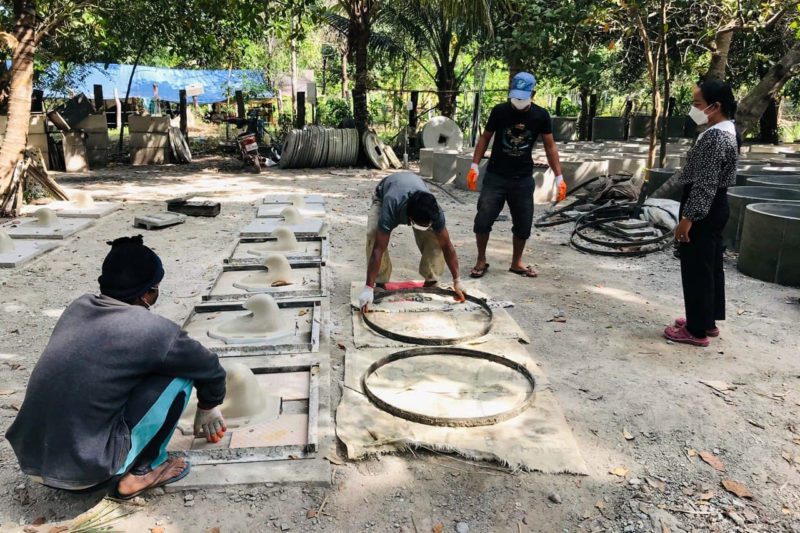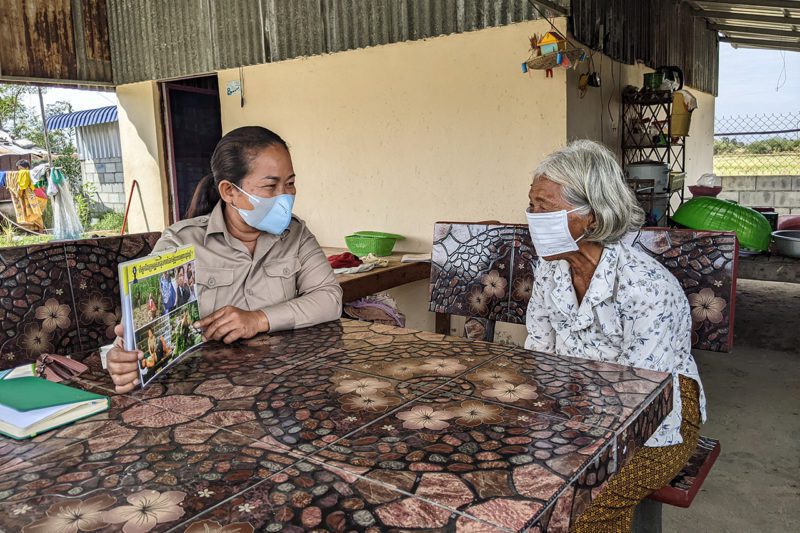Sovereign Seeds: Reclaiming MENA’s Agricultural Future
Reviving local food systems and unlocking rural prosperity
Contracting for impact risk and opportunities

Leading up to the 2022 Annual Meetings of the IMF and World Bank Group taking place this October, President of the World Bank David Malpass gave a speech entitled, “The Crisis Facing Development,” where he characterized the human consequence of today’s overlapping global crises as “catastrophic.” Hardest hit, he reminded his audience, are the poor of the world. He observed, “[t]he COVID-19 pandemic – which alone led to over six million deaths – geopolitical conflicts, and extreme weather events have hurt countries and people worldwide, with the poor bearing the brunt.”
The disproportionate effect of global crises on the poor is hardly new news, unfortunately. Those with the lowest incomes often have had less access to healthcare and sanitation, and less resilience to food insecurity, displacement, and reductions in income. Accordingly, when pandemics, geopolitical conflicts, and extreme weather events strike, pre-existing inequalities in societies are often exacerbated. But, it doesn’t have to be that way. Sometimes impact risks can be turned into impact opportunities – if one listens to the end-user.
Take the example of an impact investment that funded iDE, a nonprofit organization that operates in Cambodia. When measures responding to the coronavirus pandemic were put in place by the Government of Cambodia in March 2020, iDE was just four months into a four-year, impact investment-backed, social outcomes contract (known as the Cambodia Rural Sanitation Development Impact Bond).

Loeurm Barang (right), female latrine business owner. Her business is growing but she is aware that she needs to keep prices reasonable for her low-income customers.
As originally envisioned, this impact bond aimed to achieve universal sanitation within rural Cambodian communities by increasing sales of affordable latrines to these rural households. As an incentive, the underlying social outcomes contract provided that performance-based payments would be made based on the number of villages claiming open-defecation free status.
Sometimes impact risks can be turned into impact opportunities – if one listens to the end-user.
As the pandemic worsened, related lockdown measures forced iDE to reconsider its sales model, which included door-to-door visits and group sales meetings. iDE’s existing presence and relationships in the poor, rural communities it served uniquely positioned iDE to support those very communities as they confronted the health and economic fallout from the pandemic and related government-imposed lockdown measures. So iDE pivoted.
With training material from UNICEF and permission from local Cambodian authorities, iDE started to provide public health messaging around virus transmission, hygiene, and, later, vaccinations alongside its work to promote sanitation through the sales of latrines. With iDE staff already embedded across six Cambodian provinces, government restrictions on movement had little effect on iDE’s ability to deliver social outcomes that went far beyond what was originally contemplated.
While this example demonstrates what can go right when things go wrong, our recent research into how impact bonds responded to the challenges of the COVID-19 pandemic reveals that the contracts underlying these transactions often did not provide useful roadmaps for stakeholders. Furthermore, those contractual arrangements rarely encouraged innovative responses, like those demonstrated by iDE when confronting the changing needs of intended end-users who were facing a health and economic crisis.
Although impact objectives and desired outcomes often were painstakingly defined in the contracts underpinning impact bonds, much less attention was paid to anticipating and allocating the risks that unforeseen events outside the parties’ control might present to the transaction’s goals. Moreover, even when such risks were addressed by contractual provisions, like force majeure clauses, expressly designed to help parties respond to unforeseen events, these provisions typically focused on how to allocate the financial risks of such events. They rarely required consideration of the impact risks on target populations of suspending performance obligations.
The general purpose of force majeure clauses in contracts is to allocate the risk of loss if performance by one or more of the contracting parties becomes impossible or impracticable as a result of an event or effect that the parties neither anticipated nor controlled. Force majeure clauses typically allow parties to suspend for agreed periods of time those performance obligations that have become impossible or impracticable because of a force majeure event. This breathing room is intended to allow the parties to regroup, look for a new way forward, or, if necessary, unwind the transaction.
Despite this lack of adequately contracting for impact risk, many impact bond stakeholders showed remarkable flexibility when facing pandemic disruptions, according to Ranajoy Basu, a London-based partner at the law firm McDermott, Will & Emery with significant experience in structuring impact bonds specifically and impact investing more generally. He saw “impact bond stakeholders make decisions to continue service delivery, extend timeframes and budgets, reschedule outcome evaluations, and even advance performance payments, often in spite of, rather than because of, what was written into the legal contracts.”
Daniella Jammes, a London-based associate at the law firm Freshfields, saw a similar pattern arise in the impact bond renegotiations she supported. When clauses found in those impact bonds were found lacking to deal with the circumstances at hand, she observed that contracting parties often agreed to solutions outside of those contractual provisions to ensure that desired impacts were met. Or, as put by a stakeholder surveyed by the Brookings Institute in its report, How have impact bond-funded projects in low- and middle-income countries fared in COVID-19, “Just because a clause is there to use does not necessitate that it must be invoked”.
Our research into impact bonds reveals that the contracts underlying these transactions often did not provide useful roadmaps for stakeholders.
The observations of Basu, Jammes, and other lawyers we interviewed over the last year highlight a significant challenge to the evolution of impact investing and those organizations like iDE that look to innovative structures like impact bonds for funding. As impact investment becomes more widespread and more commercial investors become involved, a strong alignment across stakeholders for maintaining an impact-orientation in times of crisis cannot be taken for granted. And impact alignments forged in the beginning may not hold, particularly when tested by unforeseen events.

iDE staff communicated both sanitation and public health messages to rural populations during the Covid-19 pandemic.
As iDE’s experience demonstrates, when unforeseen events occur, end-users’ needs may deepen or change, leaving them vulnerable to service termination, disruption, or simply a lack of adaptation. It also demonstrates, however, that service providers may be particularly well-placed to extend or adapt their services to respond to, or support, government responses to needs that weren’t foreseen at the time of contracting, hence turning impact risks into impact opportunities.
But end-users are rarely parties to the documentation underpinning an impact bond or impact investment. So how do their voices get heard? How do their lived experiences get shared?
Integrating the end-users’ voices into an impact investment is not easy. It requires a sustained commitment over the lifecycle of the investment. Leslie Cornell, Vice President, Deputy General Counsel & Policy Advisor at Social Finance, cautions that “who exactly is within the relevant class of ‘service users’ at each stage of a given impact investment (and, thus, which ‘voices’ to include) will vary. Diligent project managers will consider this question at each point in their investments’ life cycles to make a nuanced determination.” So, considerations should take place at the due diligence, structuring/documenting, implementing, and exiting stages.
The catastrophic human consequence of today’s multiple, global crises demands that those engaging in impact investing pay attention to not only the financial risks of unforeseen events derailing transaction goals, but also to the resulting impact risks. That attention, as seen with iDE, can unearth unexpected impact opportunities.
This can only happen on a wide scale, however, if we create impact investments and underlying contractual arrangements that encourage stakeholders to listen and respond to end-user voices to ensure that contracted services are meeting and adapting to end-user needs throughout the life of the investment. This task is not made easier by the fact that who is in the relevant ‘end-user’ group may vary across the investment term. The difficulty of the challenge does not diminish the importance of the task.
Related Content
Comments
Deep Dives

Featuring
Clarisse Awamengwi
IE Correspondent
July 17 - 12:00 PM EST

Featuring
Russell McLeod
July 24 - 12:00 PM EST
RECENT
Editor's Picks
Webinars
News & Events
Subscribe to our newsletter to receive updates about new Magazine content and upcoming webinars, deep dives, and events.
Become a Premium Member to access the full library of webinars and deep dives, exclusive membership portal, member directory, message board, and curated live chats.
At Impact Entrepreneur, we champion fearless, independent journalism and education, spotlighting the inspiring changemakers building the Impact Economy. Diversity, equity, sustainability, and democracy face unprecedented threats from misinformation, powerful interests, and systemic inequities.
We believe a sustainable and equitable future is possible—but we can't achieve it without your help. Our independent voice depends entirely on support from changemakers like you.
Please step up today. Your donation—no matter the size—ensures we continue delivering impactful journalism and education that push boundaries and hold power accountable.
Join us in protecting what truly matters. It only takes a minute to make a real difference.
0 Comments